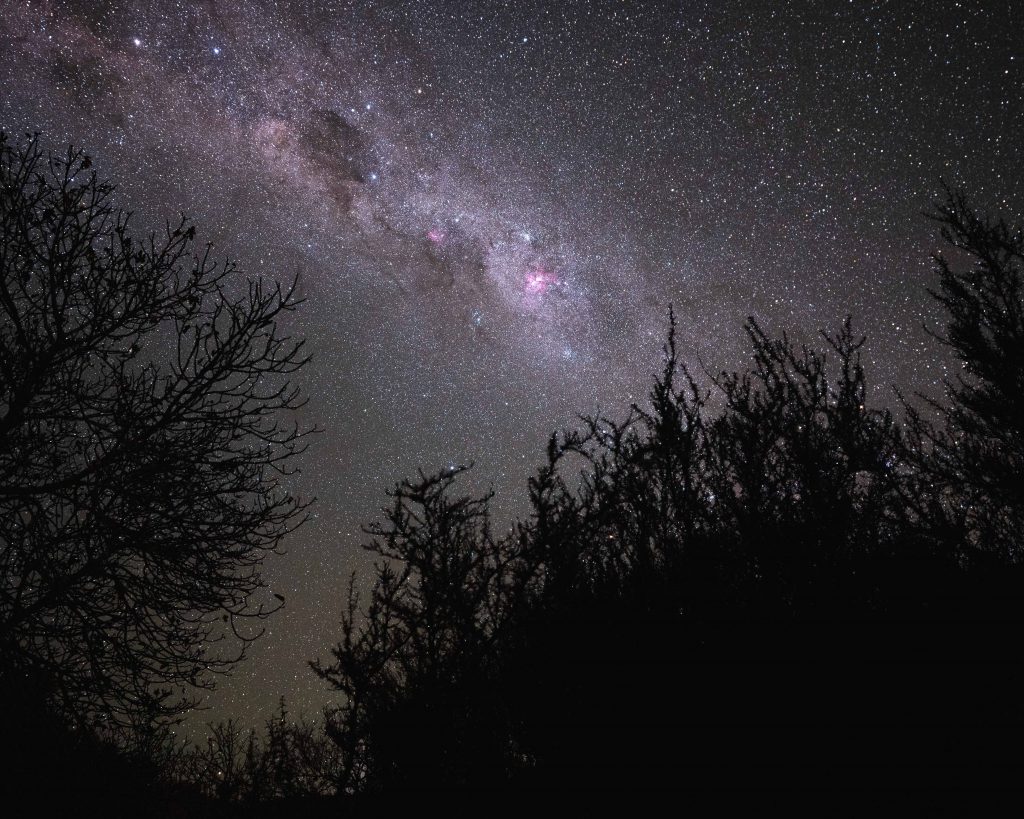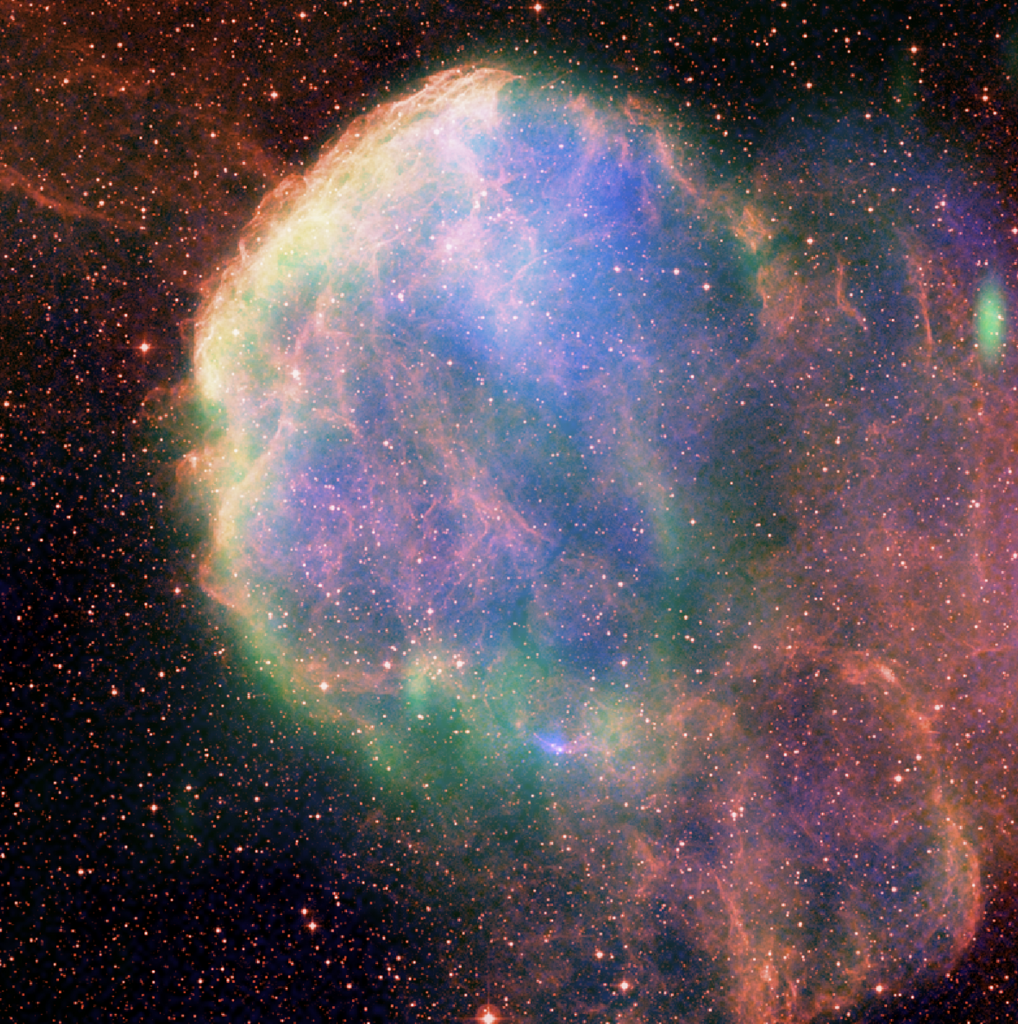 At this time of year, just after darkness falls, we get to see the thickest part of the Milky Way extending over more than half the sky from Cygnus to Scutum to Sagittarius. And where there’s Milky Way, there are star clouds. Grab your binoculars or small telescope and take a tour of the best star clouds of a northern summer (and southern winter) with the recent article published in Sky & Telescope magazine. Inspired by the photographic work of E.E. Barnard in the early 20th century, this sky tour starts with the ‘Great Cloud’ of Sagittarius and works northwards, stopping to see many star clusters and dark nebula in and around these regions of shimmering starlight. It also includes visuals, especially the recent black-and-white film photography of James Cormier. Click on the image to the left to download the article on PDF format (it’s about 6MB). Then enjoy the tour!
At this time of year, just after darkness falls, we get to see the thickest part of the Milky Way extending over more than half the sky from Cygnus to Scutum to Sagittarius. And where there’s Milky Way, there are star clouds. Grab your binoculars or small telescope and take a tour of the best star clouds of a northern summer (and southern winter) with the recent article published in Sky & Telescope magazine. Inspired by the photographic work of E.E. Barnard in the early 20th century, this sky tour starts with the ‘Great Cloud’ of Sagittarius and works northwards, stopping to see many star clusters and dark nebula in and around these regions of shimmering starlight. It also includes visuals, especially the recent black-and-white film photography of James Cormier. Click on the image to the left to download the article on PDF format (it’s about 6MB). Then enjoy the tour!
Deep Sky Observing
Articles about how to understand, find, and see celestial objects including stars, galaxies, nebulae, and star clusters with binoculars, telescopes, and the naked eye.
Touring the Summer Triangle

While not a constellation itself, the Summer Triangle dominates the overhead sky in the northern summer and autumn months and guides stargazers to other stars, constellations, and deep-sky sights. The vertices of the triangle are marked by three bright stars Vega, Deneb, and Altair, each of which belong to true constellations Lyra, Cygnus, and Aquila, respectively. The image below shows the Summer Triangle rising as seen from mid-northern latitudes at 10 p.m. in mid July. The triangle is big: it spans about two full hand widths held at arm’s length. The triangle can be seen well south of the equator, too, above the northern horizon. Southern stargazers call it the “Northern Triangle” or the “Winter Triangle” [Read more…] about Touring the Summer Triangle
Share This:The Eta Carinae Nebula

The Eta Carinae Nebula, the jewel of the southern-hemisphere constellation Carina, the Keel, is the most spectacular example of an active star factory in all the heavens. The nebula is about 260 light years across, some seven times larger than the Orion Nebula. And while 7,500 light years away, five times farther away than Orion, it’s still easily visible to the even the most casual stargazer as a large frosty patch three times as wide as the full Moon in the Milky Way west of the constellation Crux, the Southern Cross [Read more…] about The Eta Carinae Nebula
Share This:Touring Queen Berenice’s Hair

Let’s take a look at the ancient constellation Coma Berenices, a faint group of stars tucked under the handle of the Dipper halfway between the stars Arcturus and Denebola in Leo’s hindquarters. There is something for everyone here: history and legend, a beautiful naked-eye star cluster that invites careful inspection, and dozens of galaxies to explore with a modest telescope. And armchair astronomers can contemplate the immensely distant Coma Cluster of Galaxies, some 300 million light years away, that first yielded evidence for the mysterious dark matter that makes up a good portion of the universe [Read more…] about Touring Queen Berenice’s Hair
Share This:The Sound of the Jellyfish Nebula

Not far from the bright star Propus in the feet of the constellation Gemini lies the supernova remnant IC443, also known as Sharpless 248, but which is more evocatively known as the Jellyfish Nebula. While it’s a difficult object to see visually, this cosmic echo of a long-dead star presents a superb target for imagers because of its turbulent and complex structure. The nebula, which is about 5,000 light years away, is adjacent to a rich region of new star formation called Sharpless 249 in the Orion Spur of the Milky Way which makes the whole region even more photogenic.
The Jellyfish Nebula got its start when a massive star ran out of fuel, quickly collapsed, and detonated as a supernova about 30,000 years ago in a gas-strewn patch of the Milky Way. The shock wave from the explosion collided with clouds of interstellar gas and set them aglow to produced the intricate lacework of nebulosity that makes up the nebula. Most of the glowing gas is hydrogen, but there are also traces of light from ionized oxygen, sulfur, and other elements.
[Read more…] about The Sound of the Jellyfish Nebula